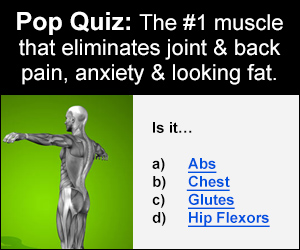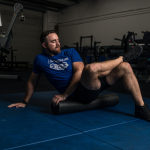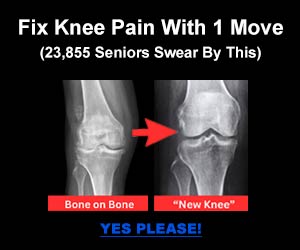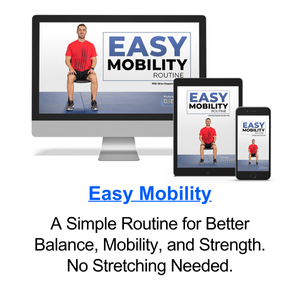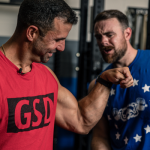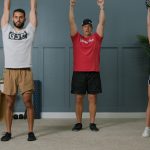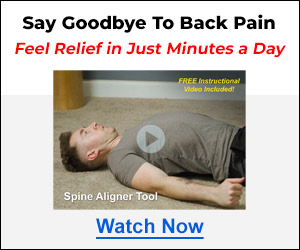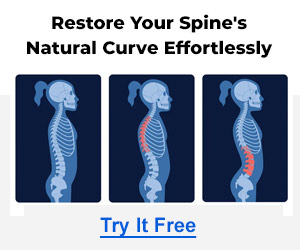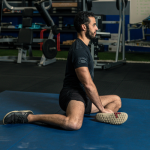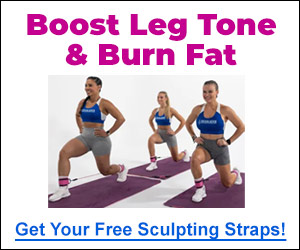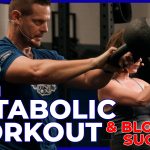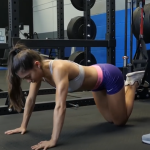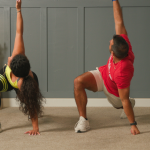Let’s get one thing straight: ‘No pain, no gain’ is the fastest route to ruining your body after 40.
For decades, this outdated mentality has convinced people that pushing through pain and suffering is the only way to see results.
The truth is that clinging to this mindset can be downright dangerous as you age.
Your body isn’t the same as it was in your 20s, and pretending it is will set you up for chronic injuries, burnout, and frustration.
In this post, we’re going to shatter the illusion that pain equals progress and explore why smarter, more sustainable training is the key to long-term fitness after 40.
Get ready to rethink everything you thought you knew about getting stronger and fitter as you age.
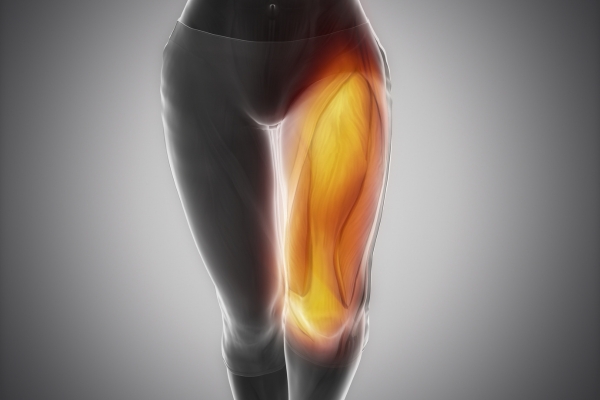
The Science of Aging Muscles and Joints
After 40, your body starts playing by a different set of rules.
Recovery slows down, joint health becomes more fragile, and your injury risk increases significantly.
Aging muscles experience a natural decline in elasticity and strength, meaning they’re less capable of bouncing back from intense workouts.
This is due in part to sarcopenia—the age-related loss of muscle mass—which starts creeping in during your 30s and accelerates with each passing decade.
But it’s not just your muscles at risk; your joints are under siege too.
The cartilage cushioning your joints wears down over time, making them more susceptible to damage from high-impact exercises.
Ligaments and tendons lose flexibility, meaning they’re less capable of handling sudden movements or heavy loads.
This combination creates a perfect storm where the “no pain, no gain” approach can lead to chronic pain, tendonitis, and long-term damage if ignored.
Research backs this up.
Studies show that after 40, your body’s ability to repair microtears in muscle fibers diminishes, leading to longer recovery times and an increased likelihood of injury. [1]
Pushing through pain with the same intensity you had in your 20s not only delays healing but can also lead to overtraining, inflammation, and a cascade of issues that could sideline your fitness goals for good.
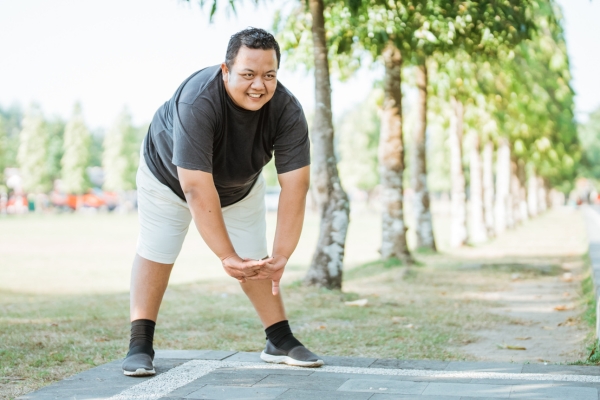
Why Listening to Your Body Matters More After 40
When you hit 40, your body’s signals are no longer just background noise—they’re critical messages that can make or break your fitness journey.
The difference between discomfort and injury-related pain becomes more than just a subtle distinction; it’s the line between progress and long-term setbacks.
While younger athletes might get away with pushing through discomfort, those over 40 need to be strategic and discerning about when to press on and when to ease back.
Discomfort—like muscle fatigue or mild soreness—is a natural part of growth.
But sharp, stabbing pain or persistent aches in your joints are red flags that something is wrong.
Ignoring these signals isn’t a sign of toughness; it’s a fast track to chronic injuries, tendonitis, or worse.
Over time, these issues compound and can lead to extended periods of downtime, or even surgeries, forcing you out of the game altogether.
This is where “smart training” comes in.
Smart training is about optimizing your workouts for longevity by prioritizing injury prevention, functional movement, and recovery.
Instead of focusing on grinding out every rep or chasing exhaustion, you listen to your body and adjust accordingly.
It’s not about doing less; it’s about doing what’s right for your body at this stage of life.
By training smarter, you can still push your limits—just in a way that sets you up for long-term success rather than short-lived gains followed by setbacks.

Better Training Strategies: Prioritizing Longevity and Mobility
If you want to stay fit, strong, and injury-free after 40, it’s time to shift your focus from sheer intensity to a balanced approach that prioritizes longevity and mobility.
The “go hard or go home” mentality may have worked in your younger years, but now it’s all about training smarter, not harder.
Incorporating low-impact strength training, mobility exercises, and joint care into your routine is the key to staying active and pain-free for years to come.
Shift to Low-Impact Strength Training
As you age, focusing on low-impact strength training becomes essential for preserving your joints while still building muscle.
Exercises like resistance band workouts, bodyweight movements, and controlled dumbbell lifts are great alternatives to high-impact routines.
These exercises allow you to maintain and enhance muscle strength without subjecting your joints to unnecessary stress.
The goal isn’t to lift as heavy as possible—it’s to lift with purpose, using controlled movements that enhance stability, balance, and functional strength.
Make Mobility Work a Priority
Incorporating mobility exercises into your routine is key to staying limber and reducing the risk of injury.
Activities like dynamic stretches, yoga, and targeted mobility drills can keep your joints healthy and prevent stiffness.
Better mobility and flexibility also translate to improved performance in your strength workouts, allowing you to move more efficiently with a greater range of motion.
Train Smarter, Not Harder
The “train smarter, not harder” philosophy is about prioritizing quality over quantity in your workouts.
This approach doesn’t mean going easy—it means optimizing your training for long-term sustainability.
A routine that balances strength, flexibility, and joint health ensures you’re building a body that’s not only strong but also resilient enough to handle life’s demands well into the future.
Instead of chasing intensity at all costs, you’re focusing on the consistency and balance that keep you fit and active as you age.

The Importance of Recovery and Rest after 40
Once you hit 40, recovery isn’t just a luxury—it’s a necessity for making consistent progress.
Your body’s ability to bounce back from tough workouts slows down, and without proper recovery, you’re setting yourself up for injury, burnout, and stalled progress.
Recovery is where the real gains happen, as your muscles repair, adapt, and grow stronger.
The key is to understand that rest and recovery are just as critical to your fitness journey as the time you spend training.
The Importance of Active Recovery and Mobility Work
Active recovery, which includes low-intensity activities like walking, light cycling, or yoga, keeps your body moving without overtaxing it.
This approach boosts circulation, helping to flush out metabolic waste and deliver nutrients to your muscles for faster healing.
Incorporating regular stretching and foam rolling sessions can further reduce muscle tightness, enhance flexibility, and prevent stiffness—all while keeping your joints healthy and ready for your next workout.
Prioritizing Sleep: The Ultimate Recovery Tool
Never underestimate the power of sleep.
As you age, your body relies on adequate sleep more than ever to repair muscle tissue, regulate hormones, and reduce inflammation.
Aiming for 7-9 hours of quality sleep can make all the difference in how quickly you recover and how prepared your body is for the next training session.
Skimping on sleep not only slows recovery but also increases your risk of injury, making it harder to stay consistent in your workouts.
Consistent, Low-Stress Training for Long-Term Success
The “no pain, no gain” mentality often overlooks the power of consistency and controlled intensity.
As you age, consistent, low-stress training leads to better results than all-out, high-intensity sessions that leave you drained and sidelined.
By focusing on sustainable workouts that allow adequate recovery, you’re building a strong, resilient body that continues to improve over time.
The key is to work smarter, not harder—prioritizing recovery as the foundation for long-term fitness success.
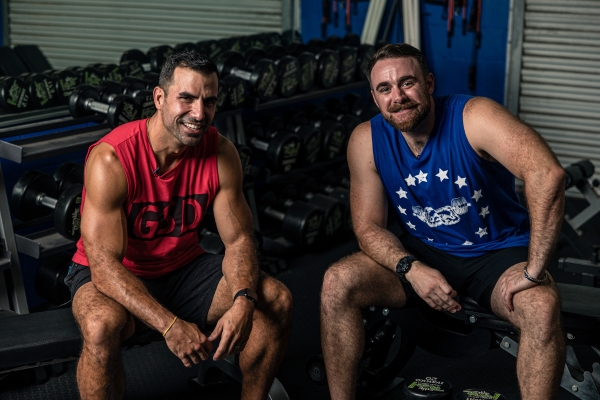
Practical Tips for Adjusting Your Training Approach
If you’re over 40, fine-tuning your workout strategies is crucial for staying fit, injury-free, and consistent.
Here are some actionable tips to help you adjust your training approach:
1. Start with Proper Warm-Ups and Mobility Drills
Warm-ups and mobility work become even more critical as you age.
Begin each session with dynamic stretches and joint mobility exercises that get your muscles ready and your joints lubricated.
Focusing on mobility not only improves your range of motion but also helps prevent injuries that could derail your progress.
2. Integrate Strength Training Focused on Stability and Balance
Strength training is still a must, but your focus should shift toward exercises that enhance stability and balance.
Incorporate movements that challenge your core, improve coordination, and strengthen smaller stabilizing muscles.
Think about adding exercises like single-leg deadlifts, resistance band movements, and core stabilization drills to your routine.
3. Incorporate Rest Days and Periodized Training Plans
Your body needs time to recover, especially as you age.
Make rest days non-negotiable and consider using a periodized training plan—alternating between phases of higher and lower intensity.
This strategy allows your body to adapt while avoiding overtraining, helping you make steady, sustainable progress without burning out.
4. Use a Mix of Cardio, Strength, and Flexibility for Well-Rounded Fitness
A balanced fitness program is key for longevity. Combine cardiovascular exercises with strength training and flexibility work.
Cardio boosts heart health and endurance, strength training maintains muscle mass and bone density, and flexibility exercises keep you limber and reduce the risk of injury.
This holistic approach ensures you’re covering all bases and promoting overall well-being.

Embrace a Smarter Approach for Healthier Aging
The “no pain, no gain” mentality may sound motivating, but it’s a risky approach once you’re over 40.
Pushing through pain and ignoring the body’s signals can lead to long-term injuries, chronic pain, and burnout—exactly the setbacks you want to avoid as you aim for a healthier, more active lifestyle.
Prioritizing longevity, injury prevention, and overall well-being isn’t about doing less; it’s about being strategic, intentional, and consistent with your training.
So here’s your call to action: Take a moment to reassess your training approach.
Are you still clinging to outdated beliefs that pain equals progress?
If so, it’s time to let go and embrace a strategy that prioritizes your health, supports your goals, and keeps you moving strong—no matter your age.
Your body will thank you for it in the years to come.









